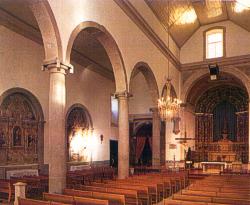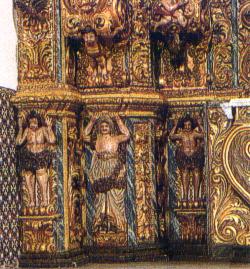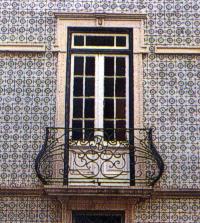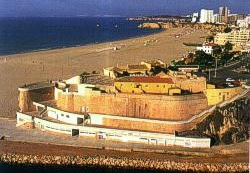Tourist Attractions
First, the blue sea and its gently lapping waves. Then fine golden sands framed by cliffs and rocks. The cosmopolitan atmosphere of an international tourist destination. This is the Algarve of beach holidays in the sun.
Portimão and its municipality have more to offer though. A rich heritage of historical monuments. The eternal natural beauty of the Ria de Alvor. The charm of cultivated fields, of slopes covered with pine trees and wild flowers. The allure of walking up into the hills and looking down on the Algarve from a new perspective.
|
| Church of Nossa Senhora da Conceição. Situated on a hilltop, this church has for centuries been a distinctive feature of the dry skyline. First built in the 15th century, it was rebuilt in the 18th and extensively renovated in the 19th. Of the original structure all that remains is a fine gothic doorway with decorated capitals, a gargoyle and buttresses. The interior consists of three naves. On the high altar is an impressive carved and gilded retable with baroque decoration. Among the various statues, that of St. Peter the Apostle (16th century) stands out, along with four crucifixes made of ivory and lignum vitae. There are fonts in the Manueline style (16th century) and an ashlar of glazed tiles of diverse origin (17th century). |
|
Jesuit College. This austere and majestic edifice was built on the orders of Diogo Gonçalves a nobleman who made his fortune in the Far East and is buried in a tomb made of various marble colour types, inside the church. Construction work continued from 1660 to 1707 and the church needed major repairs after the earthquake of 1755. The facade is made up of three sections, The section corresponding to the church is higher than the other two and has a curved pediment. The right-hand section has a Manueline doorway (16th century). The church, which is the biggest in the Algarve, consists of a single nave, like a large hall, and is typical of its kind. The high altar and lateral altars contain gilded canings (beginning of the 18th century) which are of interest for their profuse decoration, with a Renaissance statue of the Virgin and Child (16th century) and others dating from the 17th/18th centuries. The side altars contain a statue of Nossa Senhora da Piedade (Our Lady of Piety) and a crucifixion of Senhor Jesus dos Milagres. |
|
|
| The Old Town. All that is left of medieval Portimão are a few stretches of the city wall now hidden by houses. The old town is dominated by the architecture of the late 19th and early 20th centuries: houses on two storeys, with wrought iron balconies and ornate stonework around windows and doors, decorated with balustrades of stone and ceramics and walls covered with tiles. The old palace of the Viscounts of Bivar (18th century), a building of fine classical lines, is now home to the municipal council. To savour the spirit of Portimão there is nothing better than to sit in the shade of the trees in the Manuel Bivar gardens and forget about time, to watch the fishing boats and pleasure motor craft pass and to walk through streets and squares that exude the ambiance of an active, hard-working town which has succeeded in keeping pace with progress. |








